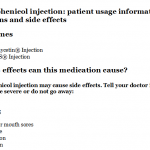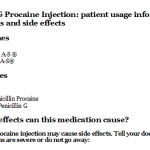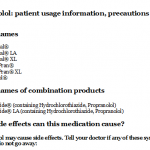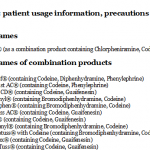
Zostavax: (Zoster Vaccine Live): patient information, prescribing information, ingredients, manufacturer, adverse reactions and side effects
Thursday, April 06, 2017 by Gregory Van Dyke
http://www.naturalnewsreference.com/2017-04-06-zostavax-zoster-vaccine-live-patient-information-prescribing-information-ingredients-manufacturer-adverse-reactions-and-side-effects.html
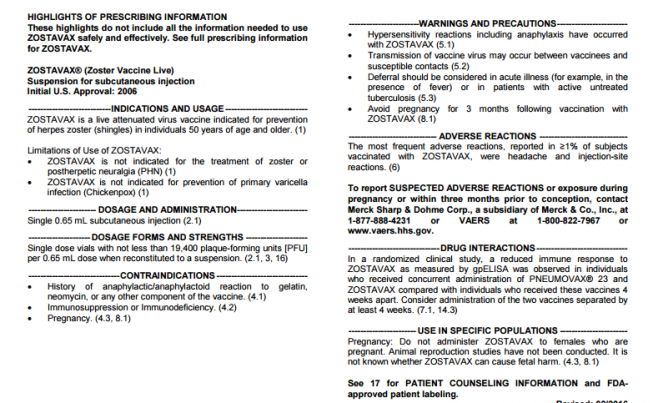
HIGHLIGHTS OF PRESCRIBING INFORMATION
These highlights do not include all the information needed to use ZOSTAVAX safely and effectively. See full prescribing information for ZOSTAVAX.
See full insert sheet at this link at the Natural News Reference website.
ZOSTAVAX® (Zoster Vaccine Live)
Suspension for subcutaneous injection
Initial U.S. Approval: 2006
INGREDIENTS AND EXCIPIENTS
ZOSTAVAX is a lyophilized preparation of the Oka/Merck strain of live, attenuated varicella-zoster virus (VZV). ZOSTAVAX, when reconstituted as directed, is a sterile suspension for subcutaneous administration. Each 0.65-mL dose contains a minimum of 19,400 PFU (plaque-forming units) of Oka/Merck strain of VZV when reconstituted and stored at room temperature for up to 30 minutes.
Each dose contains 31.16 mg of sucrose, 15.58 mg of hydrolyzed porcine gelatin, 3.99 mg of sodium chloride, 0.62 mg of monosodium L-glutamate, 0.57 mg of sodium phosphate dibasic, 0.10 mg of potassium phosphate monobasic, 0.10 mg of potassium chloride; residual components of MRC-5 cells including DNA and protein; and trace quantities of neomycin and bovine calf serum. The product contains no preservatives.
INDICATIONS AND USAGE
ZOSTAVAX is a live attenuated virus vaccine indicated for prevention of herpes zoster (shingles) in individuals 50 years of age and older. (1)
Limitations of Use of ZOSTAVAX:
– ZOSTAVAX is not indicated for the treatment of zoster or postherpetic neuralgia (PHN) (1)
– ZOSTAVAX is not indicated for prevention of primary varicella infection (Chickenpox) (1)
DOSAGE AND ADMINISTRATION
Single 0.65 mL subcutaneous injection (2.1)
DOSAGE FORMS AND STRENGTHS
Single dose vials with not less than 19,400 plaque-forming units [PFU] per 0.65 mL dose when reconstituted to a suspension. (2.1, 3, 16)
CONTRAINDICATIONS
– History of anaphylactic/anaphylactoid reaction to gelatin, neomycin, or any other component of the vaccine. (4.1)
– Immunosuppression or Immunodeficiency. (4.2)
– Pregnancy. (4.3, 8.1)
WARNINGS AND PRECAUTIONS
– Hypersensitivity reactions including anaphylaxis have occurred with ZOSTAVAX (5.1)
– Transmission of vaccine virus may occur between vaccinees and susceptible contacts (5.2)
– Deferral should be considered in acute illness (for example, in the presence of fever) or in patients with active untreated tuberculosis (5.3)
– Avoid pregnancy for 3 months following vaccination with ZOSTAVAX (8.1)
ADVERSE REACTIONS
– The most frequent adverse reactions, reported in ≥1% of subjects vaccinated with ZOSTAVAX, were headache and injection-site reactions. (6)
– To report SUSPECTED ADVERSE REACTIONS, contact Merck Sharp & Dohme Corp., a subsidiary of Merck & Co., Inc., at 1-877- 888-4231 or VAERS at 1-800-822-7967 or www.vaers.hhs.gov
DRUG INTERACTIONS
In a randomized clinical study, a reduced immune response to ZOSTAVAX as measured by gpELISA was observed in individuals who received concurrent administration of PNEUMOVAX® 23 and ZOSTAVAX compared with individuals who received these vaccines 4 weeks apart. Consider administration of the two vaccines separated by at least 4 weeks. (7.1, 14.3)
USE IN SPECIFIC POPULATIONS
Pregnancy
Risk Summary
ZOSTAVAX is contraindicated for use in pregnant women because the vaccine contains live, attenuated varicella-zoster virus, and it is known that wild-type varicella-zoster virus, if acquired during pregnancy, can cause congenital varicella syndrome [see Contraindications (4.3) and Patient Counseling Information (17)].
Available data on inadvertent administration of ZOSTAVAX to pregnant women are insufficient to inform vaccine-associated risks in pregnancy.
All pregnancies have a risk of birth defect, loss, or other adverse outcomes. In the US general population, the estimated background risk of major birth defects and miscarriage in clinically recognized pregnancies is 2% to 4% and 15% to 20%, respectively.
Lactation
Risk Summary
It is not known whether varicella-zoster vaccine virus is excreted in human milk. The developmental and health benefits of breastfeeding should be considered along with the mother’s clinical need for ZOSTAVAX, and any potential adverse effects on the breastfed child from ZOSTAVAX or from the underlying maternal condition. For preventive vaccines, the underlying maternal condition is susceptibility to disease prevented by the vaccine.
Pediatric Use
ZOSTAVAX is not indicated for prevention of primary varicella infection (Chickenpox) and should not be used in children and adolescents.
Geriatric Use
The median age of subjects enrolled in the largest (N=38,546) clinical study of ZOSTAVAX was 69 years (range 59-99 years). Of the 19,270 subjects who received ZOSTAVAX, 10,378 were 60-69 years of age, 7,629 were 70-79 years of age, and 1,263 were 80 years of age or older.
Revised: 03/2017
https://www.fda.gov/downloads/BiologicsBloodVaccines/Vaccines/ApprovedProducts/UCM132831.pdf
http://naturalnewsreference.com/vaccine-insert-sheets/Zostavax.pdf
Tagged Under: Tags: dosage, ingredients, insert sheet, side effects, usage, warnings, zostavax

